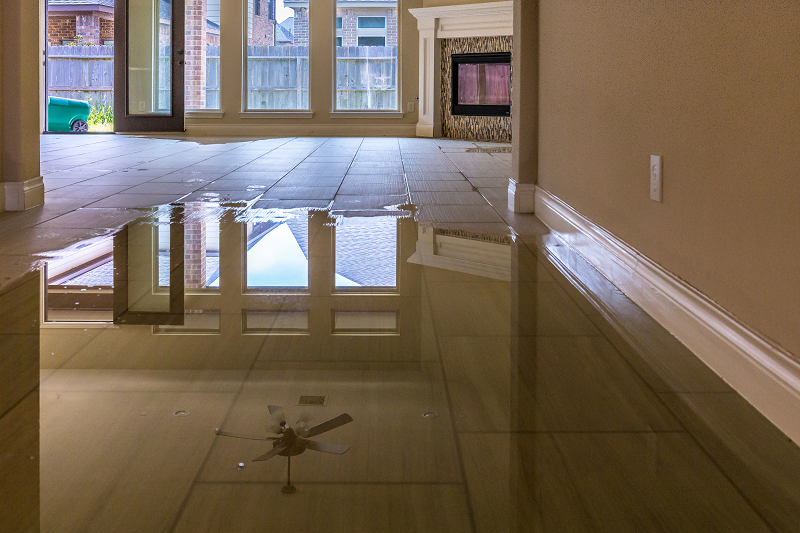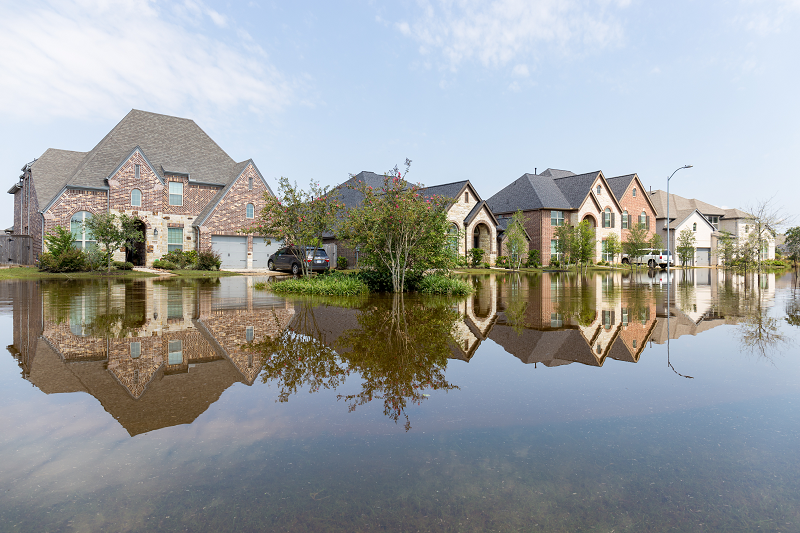
Has your house undergone flooding? Do you not know what to do to help your house in this situation? If your home has water damage, and you want to learn how to repair a flood-damaged house, then you have come to the right spot! In this article, we will outline the first steps to take when fixing a flooded home.
First, it is vital to contact your property insurance company and seek a payment to help fund the repairs from the floodwater. Afterward, you will need to hire a flood repair team or a clean-up company with expertise in water damage restoration.
You will also need to work with an HVAC specialist to repair your air conditioning system and start the drying process. Below, you will learn the details necessary for flood restoration and home repair after flooding. Ready to get started? Then check out the info below!
How to Repair a Flood Damaged House
Homeowners may find themselves amid a natural disaster and significant flooding. When that happens, their first thoughts are often about returning their home to working order.
The first thing to do upon a flood damaging your house is to look at your insurance policy. Specifically, check out the flood insurance section of your policy. Then, call your insurance company to report the flooding and make your insurance claims. FEMA can help fund repairs in some instances of a natural disaster.
A responsive and qualified property insurance company should promptly provide you with the payment. Once you have the funds in hand, you will need to repair your home to make sure it is safe to live in.
Homeowners may think the flood damage repairs only need redecorating like repainting, drying off the water, and replacing the ceramic tile flooring or carpets. However, you will need to pursue more critical safety-based updates like:
- Fixing mold growth to prevent health problems
- Repairing structural damage
- Updating electrical systems with the help of an electrician
You must repair the safety problems before mold starts growing, as it can lead to health hazards like red eyes, sneezing, skin rashes, and runny noses. These health issues are similar to hay fever.
Before further damage occurs, like mold growth, you will need to follow the steps below to repair a flood-damaged house.
- Hire a flood repair company
- Hire an HVAC contractor
- Complete the drying out process on your home
- Find and fix any mildew or mold growth in affected areas
- Document all renovations and repairs
- Work with an appraiser to determine your home’s value after repairs
Hire a Flood Repair Team
After you’ve gotten the funds from your homeowner’s insurance policy, you can start hiring a flood repair team or a clean-up company. These experts will work to pump any excess water out of your home.
They will work to remove water, contaminants, and any debris left behind. For instance, any soaked mattresses or upholstered furniture you can’t salvage will need to be removed. In addition, you will need a professional to help remove any standing water and sewage waste. These issues need more precautions, and you want to avoid the health hazards associated with cleaning up the mess yourself.
You will also need to hire an electrician and a contractor to help repair and remodel the home, such as baseboards and upholstery. If the water level has hit electrical panels, they will need repair. Make sure to check references and conduct a few basic background checks before hiring a flood repair specialist, an electrician, and a contractor.
Hire an HVAC Specialist
When it comes to water damage repair, you will also need the help of an experienced HVAC specialist. Proper airflow is vital when you need to keep your home dry and free of water droplets.
When it’s time to hire an HVAC specialist, you will need to follow several steps so you can ask the right questions and know what qualities to look for to avoid working with an inexperienced or inadequate professional.
For instance, some typical questions you should ask include:
- Do you have any HVAC certifications? What are they?
- What type of training and past work experience do you have?
- Do you have fixed or hourly rates?
- Have you worked with my type of HVAC system before?
- How do you manage changes to the estimate?
- Can you give me your references?
Furthermore, before hiring an HVAC contractor, check reviews of the professional online and references as well. You may also want to go to the Better Business Bureau website to find out whether the company is well regarded. Then, follow these basic steps when hiring an HVAC specialist.
Drying Out Your House

Another vital part of repairing a flood-damaged house is to begin drying it out yourself along with the flood repair team. For example, you will need to install water heaters and use fans to dry out the bedrooms, living room, kitchen, basement, and more.
You will most likely need to dry out subfloor portions of the home and use dehumidifiers to eliminate the extra humidity and water droplets throughout the house.
You will need to have your contractor remove the drywall, insulation, and other porous material, to reduce the chances of mold and mildew growth. Once that happens, you will want to leave the cavity wall open to give it a chance to dry out. It might take several weeks for the wall cavity to dry out completely.
For instance, wood studs that are dry when you touch them might still have wetness in the middle. So contractors use moisture meters to determine if the wall has dried out before starting the renovations.
Identifying and Fixing Mold Issues
It is vital to identify and fix any mold issues in the flooded home. For instance, you will need to replace solid wood flooring and other floorings like laminate, carpeting, and tiling.
Hardwood and laminate floors, including the subfloor, tend to absorb the clean water and distort the shape of the floors. If there is tile on top, it will stop the wood underneath from drying out completely. Wet wood will then lead to mold growth. As such, you’ll need to rip out the tile, laminate, or carpeting.
You will also need to open up your walls to dry out the wood studs. That will cut down on moisture and the risk of mold growth. Finally, remove the drywall and particleboard around one foot above the water line to stop any mold or mildew from growing there.
In addition, you’ll need to remove the insulation, as it rarely completely dries out. That way, you can ensure no mold or mildew ends up in your home’s insulation.
Document Repairs
Before you can get your home appraised after completing several repairs and renovations, you will want to document all home improvement projects. That way, the adjuster can have all relevant information on your recent changes.
Furthermore, your property insurance company will likely need information on all the renovations you’ve completed in case you are still waiting for your insurance claim payment.
Track every receipt you get from your contractors. Are there building codes you need to meet? Keep track of anything you get from government officials regarding building codes and all renovations you complete. Documenting your repairs will significantly help you in the long run.
Get Home Appraised After Repairs
You will need to work with an adjuster to have your home appraised and to determine its value after completing repairs. Appraisals are essential parts of purchase-and-sales transactions. That information will help you determine where your home’s asking price should land if you plan to sell the property.
A home appraisal is based on the condition of your home, the various features of the house, and the neighborhood or town your place is located. For instance, homes in better school districts tend to have higher appraisal values.
Completing renovations after a flood is one of the best ways to increase home’s value. The home appraisal is also imperative for mortgage companies, as they need to ensure the homeowner does not overborrow since the property serves as collateral if the borrower fails to pay off their loan.
Don’t forget to get the home appraisal completed once your contractor finishes all repairs.
Conclusion
Now that you’ve gone through the list above, you should know exactly how to repair a flood-damaged house. However, if your insurance payment hasn’t come through or you don’t want to pursue all those renovations, you can sell the property in its as-is condition to real estate investors or cash buyers.
If you’re selling your house without a realtor, you will want to contact cash home buyers in Tampa and other Florida locations. Cash buyers can also complete the entire sale transaction in only a few weeks. So, if you want to sell a house fast in Florida, you’ll need to work with cash buyers.
We buy houses Clearwater residents adore with cash offers, so make sure to contact us today!


 Call Us!
Call Us!